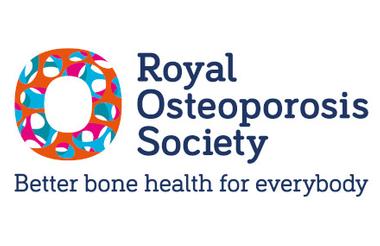By the third lockdown, we at the Royal Osteoporosis Society (ROS) knew we needed to refresh our strategy two years early to adjust to the post-pandemic world.
With vast swathes of the NHS operating at severely reduced capacity, our support services were in record demand, just as the fundraising climate had become much tougher. We knew we needed to rethink our approach to impact, become more focused and more long-term in our thinking.
This week, we publish our new strategy, which re-orientates the charity towards national policy influencing, campaigning and public engagement. It’s backed by a £1.7m investment programme over three years in public affairs, health services research, advertising and digital service delivery. Those funds have been freed up from the sale of our rural building, as we embraced hybrid working and move to a leased city office with a smaller floorplate.
Here's why we did it.
Osteoporosis is a public health emergency
Osteoporosis was a public health emergency even before the pandemic. Two-thirds of people were missing out on the treatment they need, due to long-term under-prioritisation and the postcode lottery for Fracture Liaison Services (FLS) – the world standard for diagnosis, treatment and follow-up.
Osteoporosis causes bones to break (fracture) after simple injuries, such as a cough, a fall from standing height, or a hug from grandchildren. These fractures are no minor setback: as many people die from fracture-related causes as from lung disease and diabetes.
It doesn’t need to be like this. Osteoporosis is treatable and fractures preventable. With an early diagnosis and the right treatment plan, people can live very well, thanks to safe, effective medication that’s highly affordable for the NHS. But missed opportunities for diagnosis and early intervention mean that an estimated 90,000 people every year are missing out on the medication they need.
Action is now beyond the point of urgency. But while Covid-19 created the burning platform, the drivers for the UK’s osteoporosis crisis go back further.
'End the postcode lottery for NHS fracture services'
For years, under-diagnosis and under-treatment of osteoporosis has meant that problems have been routinely left to escalate to boiling point. A fifth of women suffer three or more fractures before getting a diagnosis, meaning they’re already in crisis when they contact us.
Many helpline callers have suffered multiple spinal fractures, mistaken in primary care for a bad back or generalised ageing. Severe and painful in themselves, these spinal fractures are red flags for a future hip fracture, the injury that does more than any to undercut people’s freedom and independence. It’s criminal that 70% of these ‘alarm bell’ spinal fractures never come to medical attention – meaning around 2.6 million of us are at risk today.
This made it obvious that, rather than intervening when all the balls have been dropped, we need to make the case to government for early intervention and a timely diagnosis for all. And this means ending the postcode lottery for fracture services in the NHS.
ROS has a strong record of supporting local clinicians to make business cases for FLS in hospitals. Between 2015 and 2019, we helped 29 new services launch across the UK, extending the gold standard for fracture prevention to 10 million people.
Launching an advocacy programme
But with 40% of the population still excluded, we know we need to pivot towards putting FLS at the heart of national policy. This means top-down strategic influencing to make FLS part of the core offer of Integrated Care Systems (ICS), rather than a local add-on by exception. To do this, we’ve launched a bold advocacy programme to put osteoporosis at the top of the public health agenda and keep it there. Early results have been good, with more mentions of osteoporosis in Westminster over the last eight months than over the previous eight years combined.
We’re more likely to succeed if we inspire like-minded organisations to join us. And that means tackling the dangerous tropes about ageing that have caused osteoporosis to be side-lined for so long: four in ten people think that curved backs and lost height are ‘just part of getting older’, rather than symptoms of a treatable condition. We want to change the culture around osteoporosis from one of passivity and defeatism to one of optimism and determination. In short, we’ve found our campaigning voice.
We know our influencing work is only as good as our evidence base, so we’ve publicly committed to making a record investment in research. But, as another strategic choice, we’ll focus our research grants only on those studies that can help close the treatment gap. When we find solutions, our advocacy work will make the case to government and NHS leaders for the changes needed to put theory into practice.
The final lever to reduce pressure on the NHS and our own services will be a prevention campaign aimed at people in their forties – the age just after bone mass peaks. In a first for ROS, we’ll launch a public advertising campaign to warn people who are at higher risk of osteoporosis, aiming to get them into the system quicker. And from 2023, we’ll make a strategic pivot to bone health to become relevant for this whole new audience.
Collaboration
We know our own behaviour needs to change too. The scale of our mission is vast and we know we can’t achieve it alone. That’s why we need to start thinking of ourselves in terms of networks and a movement. We’re becoming more collaborative, better at partnership-working and stronger at holding others to account. We proudly re-joined both NCVO and the Arthritis and Musculoskeletal Alliance (ARMA) for these exact reasons.
In summary, the next phase in our story will be unrelentingly outward-looking. It’ll look and feel different – more challenging to the system and less satisfied with the status quo. It’ll be marked by a step change in campaigning, public engagement and influencing. We’ll close the treatment gap through our advocacy, while reducing demand on the NHS through our prevention campaign and support services.
The pandemic has generated unprecedented support for the NHS and a new sense of solidarity between people of different ages. We’re determined that good should come out of this crisis. And we’re willing to change and evolve to make it happen.
Craig Jones is CEO of Royal Osteoporosis Society
Related articles










